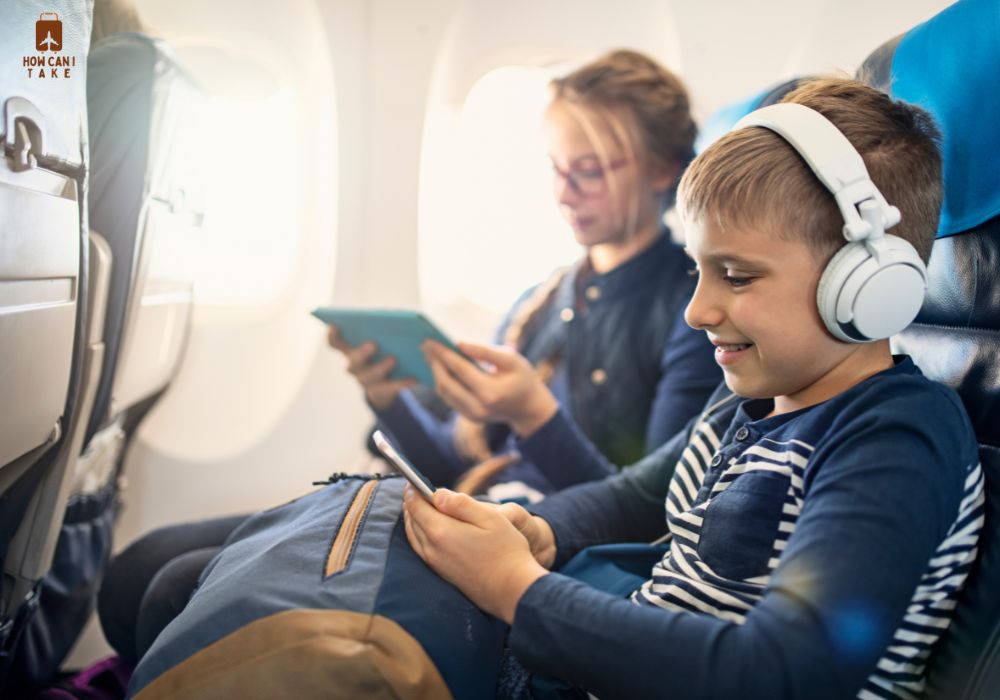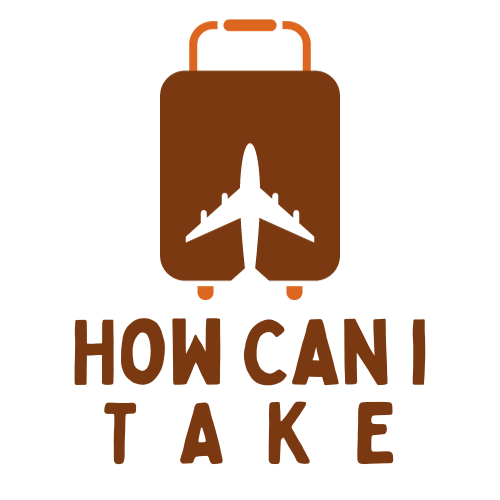Yes, you can take headphones on a plane. Both wired and wireless headphones are allowed in carry-on and checked luggage.
Headphones are essential for travelers who want to enjoy music, movies, or podcasts during flights. Airlines permit passengers to bring wired or wireless headphones on board. Using headphones can significantly enhance your travel experience by blocking out ambient noise. They also allow you to enjoy in-flight entertainment systems provided by many airlines.
Remember to carry a headphone adapter, as some aircraft have unique audio jacks. Always check the airline’s specific rules regarding electronic devices. Keep your headphones easily accessible in your carry-on bag. This ensures you can use them as soon as you reach your seat. Enjoy a peaceful and entertaining flight with your favorite headphones.
Table of Contents
Airline Regulations
Wondering if you can take your headphones on a plane? Understanding airline regulations is essential. Each airline has specific rules about carry-on items and in-flight use. This guide helps you navigate these policies smoothly.
Carry-on Policies
Most airlines allow headphones in your carry-on bag. Here are some general guidelines:
- Pack your headphones in a protective case.
- Ensure they fit within the carry-on size limit.
- Wireless headphones should be charged before the flight.
Some airlines may have stricter rules. Always check their website for specific details.
In-flight Use
Using headphones in-flight is usually permitted. Here are some common practices:
- Wait until the plane reaches cruising altitude.
- Keep the volume low to hear announcements.
- Use airplane mode for wireless headphones.
Flight attendants may ask you to remove them during takeoff and landing. Follow their instructions for a safe journey.

Types Of Headphones
When flying, choosing the right headphones is crucial. Different types offer unique benefits. Let’s explore the various options available.
Wired Vs. Wireless
Wired headphones connect to your device using a cable. They usually provide better sound quality. There’s no need to charge them. However, the cables can be annoying.
Wireless headphones use Bluetooth to connect. They offer more freedom of movement. Yet, they need regular charging. The sound quality can vary.
| Feature | Wired | Wireless |
|---|---|---|
| Sound Quality | Usually better | Varies |
| Convenience | Less due to cables | More freedom |
| Battery | No need to charge | Requires charging |
Noise-canceling Features
Noise-canceling headphones are ideal for flights. They block out engine noise. This feature allows you to enjoy music or movies without disturbance. There are two types:
- Active Noise-Canceling (ANC): Uses microphones to reduce noise.
- Passive Noise-Canceling: Uses materials to block noise.
ANC headphones are more effective. They can be pricier. Passive options are usually cheaper. Both types improve your listening experience.
Security Checkpoints
Traveling with headphones is common. Understanding the rules for security checkpoints is essential. This guide helps you navigate these rules smoothly.
Tsa Guidelines
The Transportation Security Administration (TSA) allows headphones in both carry-on and checked bags. But, keep your headphones in your carry-on for easy access. You might need them during the flight.
Headphones must be removed from their case. Place them in a bin for screening. This applies to all types of headphones, including wireless ones.
X-ray Screening
At the checkpoint, your carry-on goes through an X-ray machine. Place your headphones in a tray. Keep them separate from other electronics like laptops.
The X-ray machine scans your headphones for security purposes. This process is quick and does not harm your headphones.
To avoid delays, pack your headphones at the top of your bag. This makes them easy to reach when needed.
| Item | Carry-On | Checked Bag |
|---|---|---|
| Wired Headphones | Allowed | Allowed |
| Wireless Headphones | Allowed | Allowed |
Use the table above to understand what is allowed. It’s easy to see and follow the rules.
Remember, keeping your headphones accessible saves time. You’ll breeze through security checkpoints with ease.

Can You Take Headphones on a Plane?Battery Considerations
When flying, it’s important to consider the battery rules for headphones. Airlines have strict regulations to ensure safety. Understanding these rules helps avoid any inconvenience.
Lithium-ion Rules
Most modern headphones use lithium-ion batteries. These batteries are efficient but need careful handling. Airlines allow devices with built-in lithium-ion batteries in carry-on bags. Ensure your device meets the airline’s watt-hour limits.
Check the battery’s watt-hour rating. Most airlines allow batteries up to 100 watt-hours. This information is usually on the battery or in the device’s manual. Devices exceeding this limit require airline approval.
Spare Batteries
Carrying spare batteries? Follow specific rules to avoid issues. Spare lithium-ion batteries must be in carry-on luggage. Airlines do not permit them in checked bags due to fire risks.
Use the following table to understand the rules better:
| Battery Type | Allowed in Carry-on | Allowed in Checked Bags |
|---|---|---|
| Built-in Lithium-ion | Yes | Yes |
| Spare Lithium-ion | Yes | No |
Remember to protect battery terminals. Use original packaging or cover the terminals with tape. This prevents short circuits, keeping your flight safe.
- Check airline rules before flying.
- Carry spare batteries in original packaging.
- Protect battery terminals from contact with metal objects.
These tips ensure a smooth travel experience with your headphones.
In-flight Etiquette
Flying with headphones can make the journey more enjoyable. But, it’s important to follow some in-flight etiquette. This helps ensure a pleasant experience for everyone on board.
Volume Levels
Keeping your headphone volume at a reasonable level is crucial. Loud music can disturb those around you. Aim for a volume that allows you to hear the announcements.
Here are some tips:
- Check if you can hear others talking.
- Use noise-canceling headphones to keep volume low.
- Test the volume before takeoff.
Sharing Audio
Sharing audio with a travel buddy can be fun. But, it should be done thoughtfully. Use a headphone splitter to avoid loud speaker sounds.
Follow these steps to share audio:
- Plug in a headphone splitter to the device.
- Connect both sets of headphones.
- Adjust the volume so both can hear comfortably.
Remember, keeping the sound personal ensures a peaceful flight for all.
Entertainment Options
Traveling can be long and boring. But with the right entertainment options, the time flies by. One question many travelers ask is, “Can you take headphones on a plane?” The answer is yes! Let’s explore the various entertainment options available on flights.
Airline Systems
Many airlines offer in-flight entertainment systems. These systems provide a wide range of options like movies, TV shows, and music. Using your headphones, you can enjoy these options without disturbing others. Most airlines provide headphone jacks in their seats. Some airlines even offer noise-canceling headphones for a better experience.
Here’s a quick look at what you can expect:
| Airline | Entertainment Options | Headphone Availability |
|---|---|---|
| Delta | Movies, TV shows, Music | Provided |
| Emirates | Movies, TV shows, Games | Provided |
| Southwest | Movies, Live TV | Bring Your Own |
Personal Devices
Bringing your personal devices is another great option. Most flights allow the use of tablets, smartphones, and laptops. Using your own device, you can watch downloaded content or stream via in-flight Wi-Fi. Don’t forget your charging cables and adapters. Some planes have USB ports or power outlets.
Here are some tips for using personal devices:
- Download movies and shows before the flight.
- Bring a fully charged power bank.
- Use noise-canceling headphones for a better experience.
Using your own headphones with personal devices ensures comfort and familiarity. You can control the sound quality and volume to your liking.
Comfort And Safety
Traveling by plane can be stressful, but headphones can enhance your experience. They provide both comfort and safety during your journey. Let’s dive into how headphones contribute to your ear health and their safe storage on a plane.
Ear Health
Maintaining ear health is crucial during flights. Airplane cabins can be noisy, and prolonged exposure can harm your ears. Using noise-canceling headphones can reduce this exposure. They help block out the engine noise, ensuring a more comfortable experience.
Listening to music or podcasts at a moderate volume is essential. High volumes can cause hearing damage, especially over long flights. Experts recommend the 60/60 rule: use your device at no more than 60% volume for 60 minutes, then take a break.
Safe Storage
Storing your headphones safely is important to avoid damage. Always use a protective case for your headphones. This prevents them from getting crushed in your bag.
Here’s a quick guide to storing your headphones:
- Use a hard-shell case
- Wrap the cord neatly
- Avoid placing heavy items on top
If you have wireless headphones, ensure they are charged before your flight. Keep them in a dedicated pocket in your carry-on for easy access.
Follow these tips to make your journey more enjoyable. Your headphones can provide comfort and safety, enhancing your overall travel experience.

Troubleshooting Issues
Using headphones on a plane can elevate your travel experience. Yet, you may face some issues. This section addresses common problems and offers solutions.
Connectivity Problems
Bluetooth headphones may struggle to connect on a plane. Here’s a quick guide to help:
- Turn off airplane mode: Ensure your device’s Bluetooth is on.
- Reset your headphones: Sometimes, a quick reset helps.
- Pair again: Delete the device from your Bluetooth list, then re-pair.
- Check for interference: Nearby devices may cause problems. Move them away.
Battery Life Management
Long flights can drain your headphone battery. Follow these tips to manage battery life:
- Charge fully before travel: Start with a full battery.
- Use wired mode: If your headphones support it, use a wired connection.
- Turn off when not in use: Save battery by turning off your headphones.
- Carry a power bank: Keep a portable charger handy for mid-flight charging.
| Issue | Solution |
|---|---|
| Connection drops | Move devices closer together |
| Low battery | Carry a power bank |
| Interference | Check for and remove nearby devices |
Frequently Asked Questions
Is It Ok To Bring Headphones On A Plane?
Yes, you can bring headphones on a plane. Use them during the flight, especially for in-flight entertainment or noise cancellation. Ensure they’re in your carry-on bag for easy access.
Does Tsa Allow Headphones?
Yes, TSA allows headphones in both carry-on and checked bags. Ensure they are easily accessible for security checks.
Are Headphones Allowed In Hand Luggage?
Yes, headphones are allowed in hand luggage. Ensure they are easily accessible for security checks. Check specific airline policies.
Do Headphones Count As A Personal Item?
Headphones typically don’t count as a personal item. They usually fit in your main carry-on or personal bag. Always check airline policies.
Conclusion
You can definitely take headphones on a plane. They help make your journey more enjoyable and relaxing. Just remember to follow airline guidelines. Whether you use them for music, movies, or calls, headphones are a travel essential. So pack your favorite pair and enjoy your flight.
Safe travels!





Leave a Reply